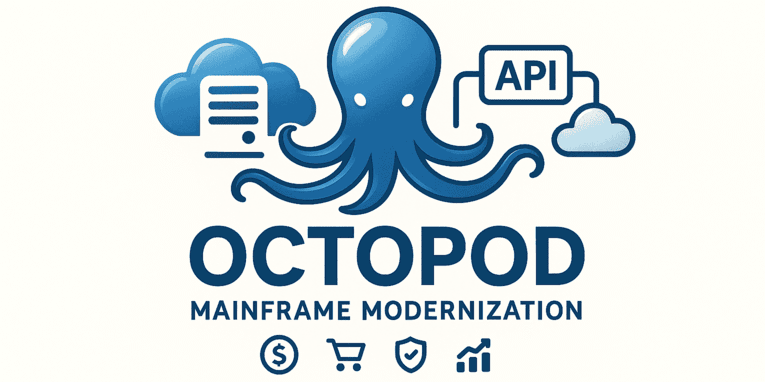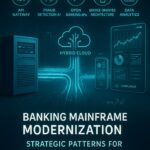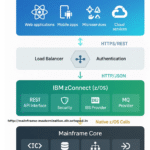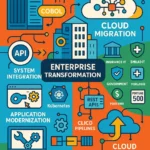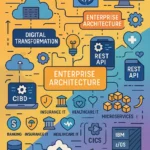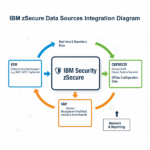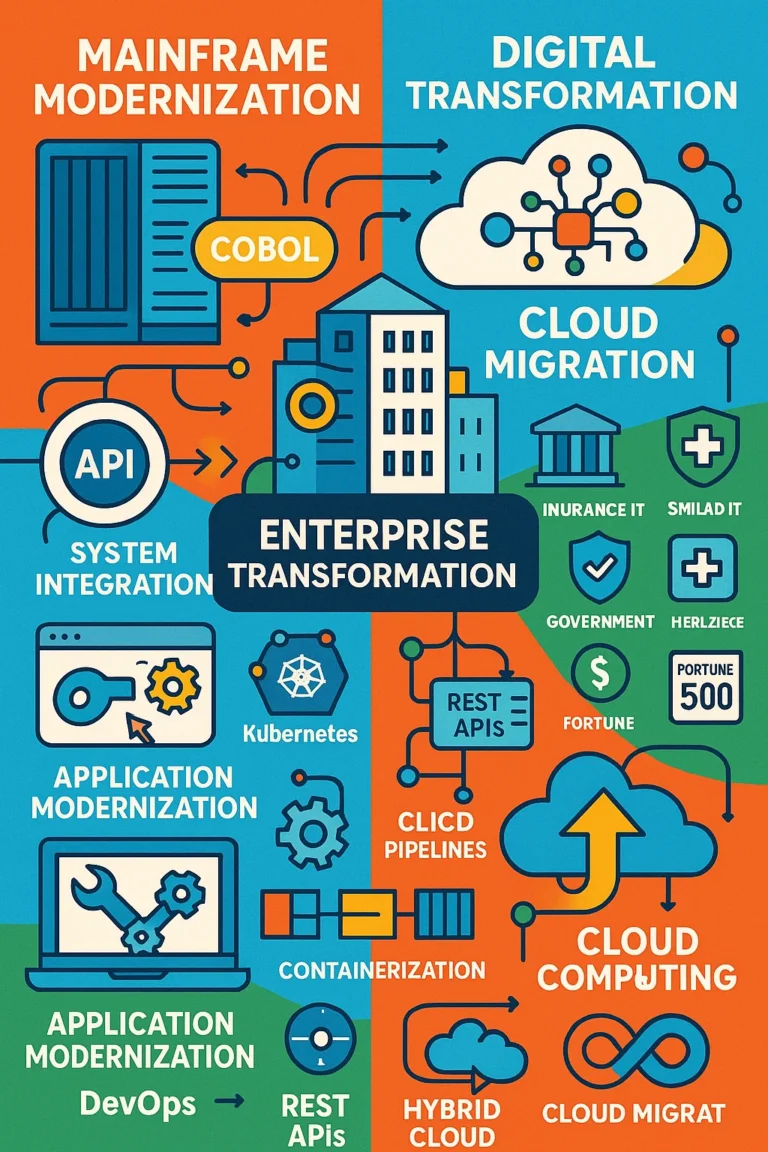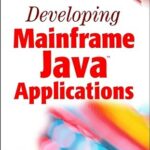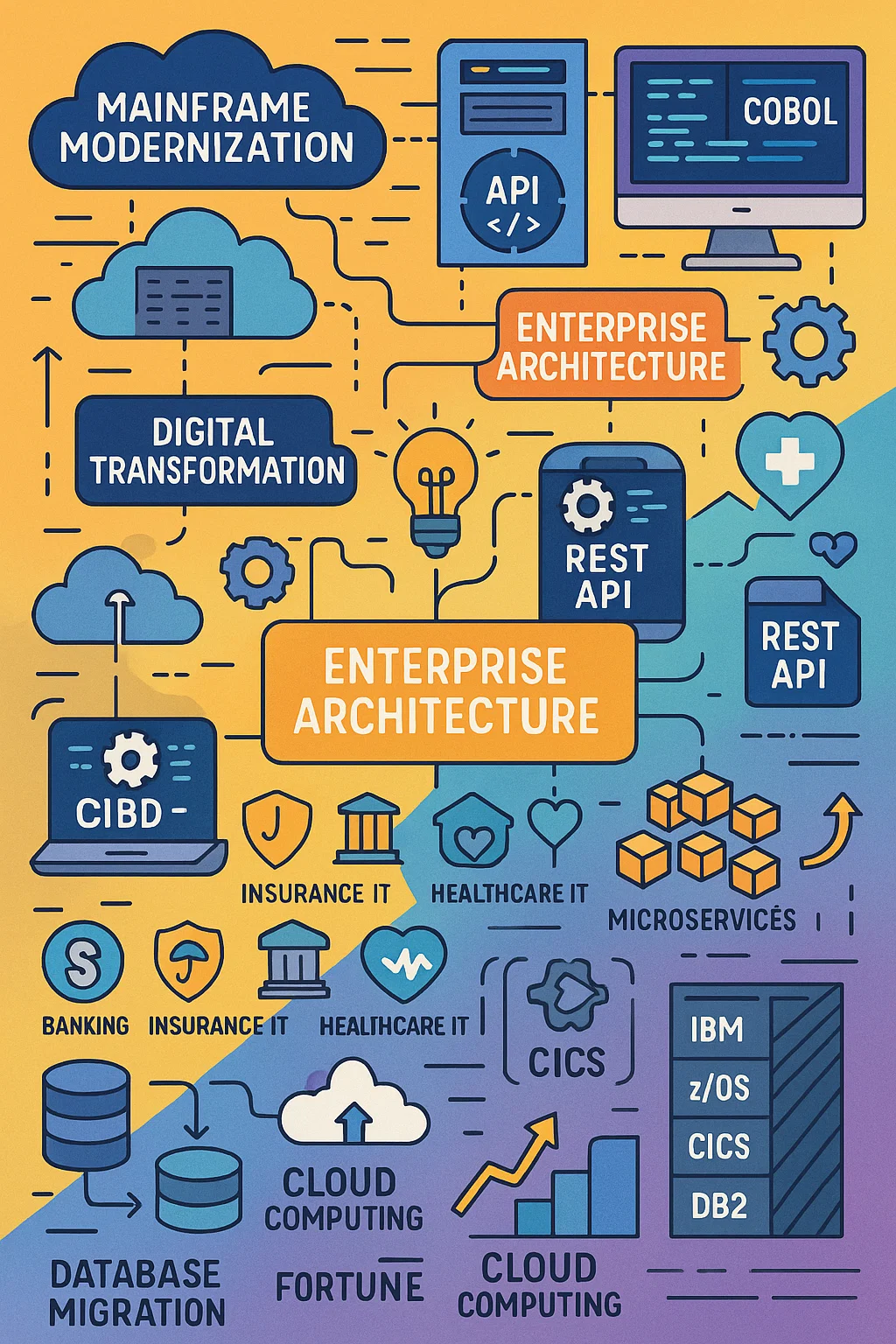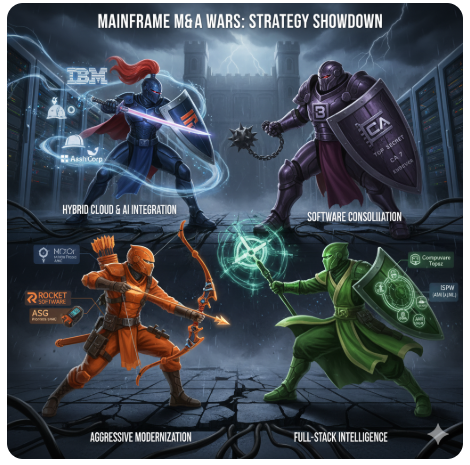Mainframe systems power over 70% of Fortune 500 companies, processing billions of transactions daily. Yet many organizations struggle with legacy systems built decades before cloud computing existed. This comprehensive guide explores mainframe modernization strategies, benefits, and implementation approaches for 2025 and beyond.
What is Mainframe Modernization?
Mainframe modernization is the strategic process of updating legacy mainframe applications, infrastructure, and processes to integrate seamlessly with modern technologies like cloud computing, APIs, microservices, and DevOps practices.
- What is Mainframe Modernization?
- Why Modernize Mainframes in 2025?
- 6 Proven Modernization Strategies
- Step-by-Step Implementation Guide
- Measuring Success: KPIs & Metrics
- Common Pitfalls & How to Avoid Them
- Real-World Case Studies
- Getting Started: Next Steps
- Conclusion
- Frequently Asked Questions
Key Components of Modern Mainframes:
- z/OS operating system – IBM’s flagship mainframe OS
- CICS (Customer Information Control System) – Transaction processing platform
- DB2 database – Enterprise-grade relational database
- COBOL applications – Business logic layer
- JCL (Job Control Language) – Batch processing scripts
Important: Modernization doesn’t always mean replacement. Often, it means augmenting and integrating existing mainframe capabilities with modern cloud-native technologies.
Why Modernize Mainframes in 2025?
Business Drivers
Organizations modernizing mainframes typically face four critical challenges:
1. Customer Experience Demands
Modern customers expect instant, mobile-first digital experiences. Legacy mainframe interfaces often can’t deliver the responsiveness required for today’s digital banking, insurance, and e-commerce applications.
2. Rising Operational Costs
- MIPS (Million Instructions Per Second) licensing fees continue increasing
- Energy consumption for on-premises mainframe hardware
- Specialized maintenance contracts and support
3. Skills Gap Crisis
The COBOL programmer shortage is real:
- Average age of COBOL developers: 55+ years
- 43% of banking systems still run on COBOL
- Limited pipeline of new mainframe developers
4. Competitive Agility
Cloud-native competitors can deploy new features in days or weeks, while traditional mainframe development cycles often take months.
Technical Drivers
Legacy Architecture Limitations
- Monolithic applications that are difficult to update incrementally
- Batch processing that doesn’t support real-time analytics
- Limited API capabilities preventing integration with modern systems
- Outdated development practices lacking CI/CD automation
6 Proven Modernization Strategies
1. Retain (Optimize in Place)
Best for: Stable, well-functioning systems with minimal change requirements
Approach:
- Performance tuning and optimization
- Infrastructure upgrades (newer hardware, z/OS versions)
- Enhanced monitoring and observability
Cost: Low | Risk: Low | Time: 3-6 months
2. Rehost (Lift and Shift)
Best for: Applications that need cost reduction without functionality changes
Approach:
- Move mainframe workloads to cloud infrastructure
- Use mainframe emulators or containers
- Minimal code changes required
Example Tools:
- Micro Focus Enterprise Server
- AWS Mainframe Modernization
- Microsoft Azure Mainframe Migration
Cost: Medium | Risk: Low-Medium | Time: 6-12 months
3. Replatform (Platform Migration)
Best for: Applications requiring better scalability and integration
Approach:
- Change underlying platform (Linux, cloud)
- Minimal application logic changes
- Enhanced with modern middleware
Cost: Medium-High | Risk: Medium | Time: 12-18 months
4. Refactor (Re-architect)
Best for: Applications needing significant functionality improvements
Approach:
- Break monoliths into microservices
- Modernize code architecture
- Implement cloud-native patterns
Technologies:
- Container orchestration (Kubernetes)
- API gateways
- Event-driven architecture
Cost: High | Risk: Medium-High | Time: 18-36 months
5. Replace (Buy New)
Best for: Commodity functions available in commercial software
Approach:
- Replace with SaaS or commercial off-the-shelf (COTS) solutions
- Data migration to new systems
- Process reengineering
Cost: Variable | Risk: Medium | Time: 12-24 months
6. Retire (Decommission)
Best for: Unused or redundant applications
Approach:
- Data archival
- Graceful system shutdown
- Compliance documentation
Cost: Low | Risk: Low | Time: 3-6 months
Step-by-Step Implementation Guide
Phase 1: Assessment & Planning (Months 1-2)
Application Portfolio Analysis
- Inventory existing applications
- Business criticality scoring
- Technical debt assessment
- Integration complexity mapping
- Dependency mapping
- Data flow analysis
- API consumption patterns
- Batch job dependencies
- ROI calculation
- Current operational costs
- Modernization investment requirements
- Projected savings and benefits
Tools for Assessment:
- IBM Application Discovery and Delivery Intelligence (ADDI)
- Micro Focus Enterprise Analyzer
- AWS Application Discovery Service
Phase 2: Proof of Concept (Months 2-4)
API Enablement Example
Legacy COBOL Transaction → CICS → API Gateway → REST EndpointImplementation steps:
- Select low-risk, high-value transaction
- Create REST API wrapper using tools like:
- IBM API Connect
- Zowe API Mediation Layer
- CA API Gateway
- Test API performance and reliability
- Measure baseline metrics
Phase 3: Incremental Migration (Months 4-18)
Hybrid Architecture Pattern
┌─────────────────┐ ┌──────────────┐ ┌─────────────────┐
│ COBOL Programs │───▶│ API Gateway │───▶│ Cloud Services │
│ │ │ │ │ │
│ Batch Jobs │───▶│ Message Bus │───▶│ Analytics │
│ │ │ (Kafka/MQ) │ │ Platform │
└─────────────────┘ └──────────────┘ └─────────────────┘Data Modernization Approaches:
- Change Data Capture (CDC) for real-time replication
- ETL pipelines for batch data migration
- API-based data access for on-demand queries
Phase 4: Optimization & Scale (Months 18+)
CI/CD Pipeline Integration
- Source code management (Git integration for COBOL)
- Automated testing (unit, integration, performance)
- Deployment automation (mainframe and cloud environments)
Measuring Success: KPIs & Metrics
Performance Metrics
- MIPS consumption reduction (target: 20-40%)
- Response time improvements (target: sub-second APIs)
- System availability (maintain 99.99%+)
- Batch processing time reduction
Business Metrics
- Development velocity (features per sprint)
- Time to market for new capabilities
- Customer satisfaction scores
- Total cost of ownership (TCO) reduction
Risk Metrics
- Security incident reduction
- Compliance adherence (SOX, PCI, etc.)
- Skills risk mitigation
- Disaster recovery capabilities
Common Pitfalls & How to Avoid Them
❌ Big-Bang Approach
Problem: Attempting to modernize everything simultaneously Solution: Adopt incremental, service-by-service approach
❌ Ignoring Mainframe SMEs
Problem: Excluding experienced mainframe developers Solution: Create cross-functional teams with both mainframe and cloud expertise
❌ Underestimating Data Complexity
Problem: Assuming simple data migration Solution: Invest in thorough data mapping and quality assessment
❌ Security Afterthought
Problem: Adding security controls post-modernization Solution: Implement security-by-design principles from day one
❌ Inadequate Testing
Problem: Insufficient parallel testing and validation Solution: Implement comprehensive test automation and shadowing
Real-World Case Studies
Case Study 1: Global Bank API Modernization
Challenge: 40-year-old COBOL banking system needed real-time API access
Solution:
- Wrapped 200+ CICS transactions as REST APIs
- Implemented OAuth 2.0 security
- Added caching layer for performance
Results:
- 60% reduction in MIPS consumption
- Sub-200ms API response times
- $2M annual cost savings
Case Study 2: Insurance Company Cloud Migration
Challenge: Legacy policy management system modernization
Solution:
- Containerized batch processing workloads
- Migrated to AWS using Application Migration Service
- Refactored customer portal as microservices
Results:
- 50% faster development cycles
- 99.99% availability improvement
- 40% infrastructure cost reduction
Getting Started: Next Steps
1. Conduct Modernization Readiness Assessment
- Application portfolio analysis
- Skills gap evaluation
- Infrastructure capacity review
2. Define Modernization Strategy
- Select appropriate strategy per application
- Create phased roadmap
- Establish success metrics
3. Build Cross-Functional Team
- Mainframe subject matter experts
- Cloud architects and developers
- DevOps and security specialists
4. Start with Proof of Concept
- Choose low-risk, high-value use case
- Implement API enablement or data integration
- Measure and iterate
5. Scale Gradually
- Apply lessons learned to additional applications
- Automate repetitive processes
- Continuously optimize and improve
Conclusion
Mainframe modernization is not a destination but a continuous journey. Success comes from balancing the reliability and security of mainframe systems with the agility and innovation potential of modern cloud technologies.
The key is starting small, measuring progress, and scaling gradually. Organizations that embrace this incremental approach often see significant returns on investment while minimizing risk to critical business operations.
Ready to begin your mainframe modernization journey? Consider partnering with experienced consultants who understand both legacy mainframe technologies and modern cloud architectures.
Frequently Asked Questions
Q: How long does mainframe modernization typically take? A: Timeline varies by scope, but most organizations see initial results in 3-6 months, with full modernization taking 2-5 years for complex environments.
Q: What’s the average ROI of mainframe modernization? A: Organizations typically achieve 20-40% cost reduction and 2-3x faster development cycles within 24 months.
Q: Can we modernize without disrupting current operations? A: Yes, using incremental approaches like API enablement and parallel processing, you can modernize while maintaining operational continuity.
Q: What skills do we need for mainframe modernization? A: You’ll need both mainframe expertise (COBOL, CICS, z/OS) and modern skills (cloud, APIs, DevOps, containerization).
